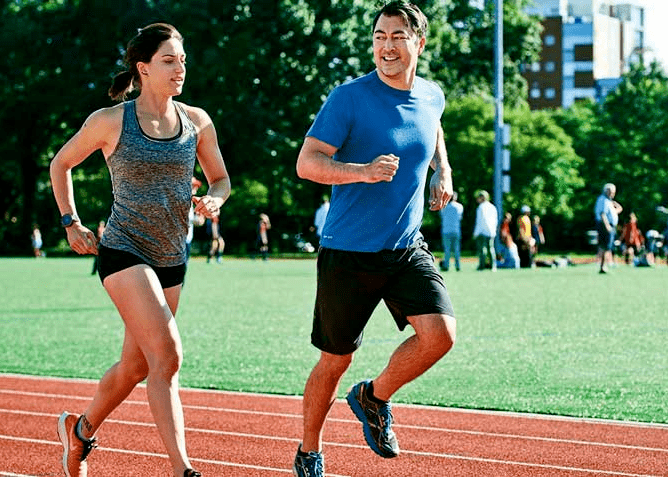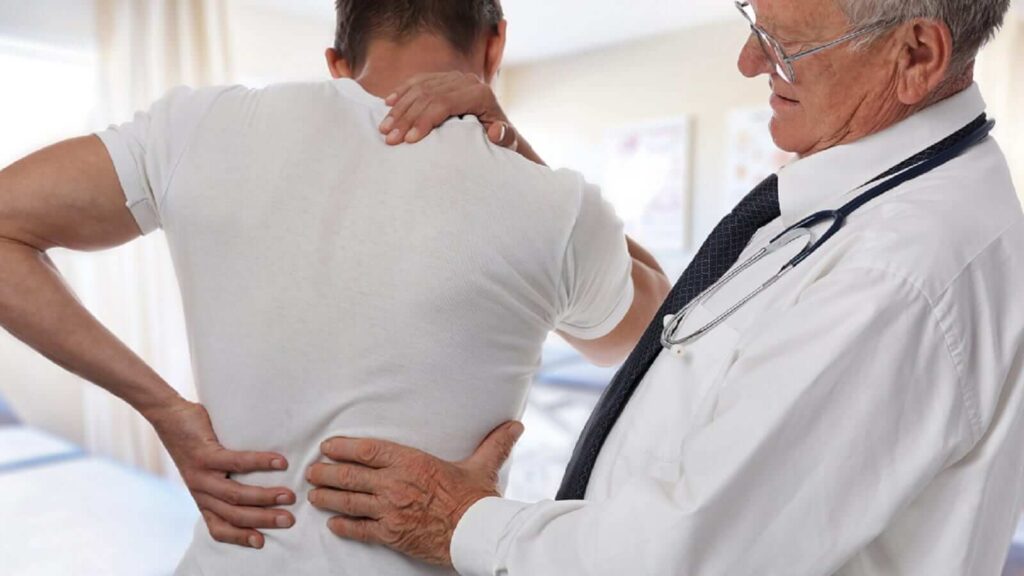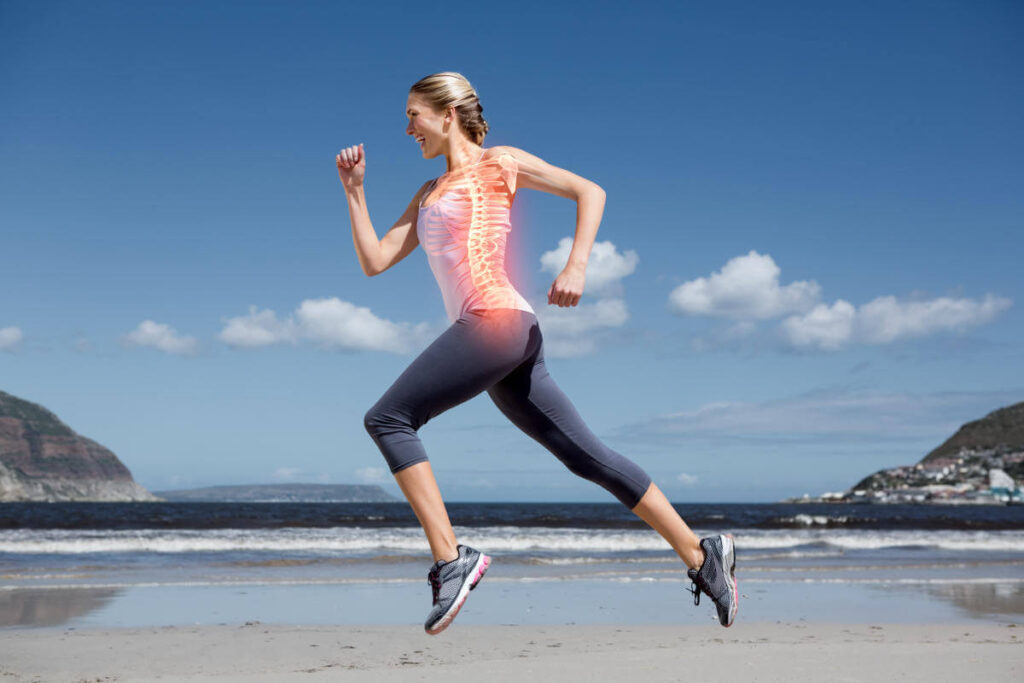Your disc doesn’t have a very robust blood supply and so it gets nutrition and circulates fluid, gets rid of toxins, and kind of maintains health only when you keep it moving. So you have to be moving. Running is a common form of aerobic exercise and it has so many cardiovascular benefits, which promote healthy aging and overall wellness. As a well-known benefit, long-distance running provides positive benefits to your spine and body posture.
Endurance running has a positive effect on your spinal health, research shows that middle-aged, long-term endurance runners have less age-related decline than their lumbar disc compared to non-runners with matched sex, height, and weight. And while the lumbar spine requires more recovery time to increase bone mineral density after high-impact exercise, other bones like the femoral neck require less time allowing them to reap the benefits of high-impact exercise even sooner. In addition to spinal health endurance running changes your body composition by changing lean mass and fat storage, aerobic exercise increases your ability to burn fat and intern supports your body’s lean mass. Middle-aged long-term endurance runners store less fat mass and more muscle tissue in the trunk area, compared to other adults, making these runners less prone to coronary heart disease and metabolic syndrome.
With so many people suffering from back pain and the threat of declining muscle strength. It’s time to take advantage of your body‘s capabilities and consider pulling on some running shoes and hitting the pavement but remember to consult your doctor before starting an exercise.

WHY IS IT IMPORTANT FOR YOUR BODY TO HAVE A GOOD POSTURE?
If your posture is not optimal, your muscles have to work harder to keep you upright and balanced. Some muscles will become tight and inflexible. Others will be inhibited. Over time, these dysfunctional adoptions impair your body‘s ability to deal with the forces on it. Extra wear and tear can occur on your joints and ligaments due to poor posture and also poor posture promotes less efficiency in your organs and lungs. Researchers have linked four posters to scoliosis, tension headaches, and back pain. Though it is not the exclusive cause of any of them, posters can even influence your emotional state and your pain sensitivity. So there are a lot of reasons to have a good body posture. But it’s not that simple nowadays, sitting in an awkward position for a long period can cause poor body posture, and also using computers or mobile devices, which motivates you to look downward and many studies suggest that on average posture is getting worse.

WHAT DOES GOOD POSTURE LOOK LIKE?
From the front or the back when you look at the spine, all of the vertebrae (33) should appear stacked in a straight line. The spine should have three curves, from the side: one at your neck, one at your shoulders, and one at the small of your back. You are not born with this S-shaped spine. Babies have only one curve like a “C”, and the rest of the curves generally develop in 12 to 18 months as the muscles strengthen. These curves can help us stay upright and absorb some of the stress, from activities like walking and jumping. And your curves should be aligned properly, this keeps your center of gravity directly over your base of support, which allows you to move efficiently with the least amount of fatigue and muscle strain. When you sit, your neck should be vertical but not titled forward. You should relax your shoulder with your arms close to your trunk. You should keep your knees at a right angle with your feet flat on the floor.
BUT WHAT IF YOUR POSTURE IS NOT THAT GREAT?
Try to redesign your environment, and adjust the screen of your computer or laptop at your eye level. Make sure all the parts of your body, like your elbow and wrist or supported, using ergonomic aids if you need to.
Try to sleep on your side, with a pillow to support your neck, and keep a pillow between your legs. Don’t wear high heels, and always use a headphone to deal with calls. it’s also not enough to just have a good posture, keeping your muscles and joints moving is extremely important. Being stationary for long periods with good posture can be worse than a regular moment with bad posture. When you do move, move smartly. Keep anything you are carrying close to your body. You should carry your backpack symmetrically which should be in contact with your back. Don’t sit a lot or get up and move around and be sure you do exercise. Movements to the muscles keep your muscles strong enough to support you. On top of all the other benefits to your joints, bones, brain, and heart. And if you are worried, check with a physical therapist, because yes, you really should stand up straight.
HOW DOES RUNNING BENEFIT YOUR SPINE?
Better discs – Compared to the people who do not run or exercise, people who run have large discs and more containers of fluid which indicates more flexibility and less pain.
Back pain relief – Running is a better option than sitting. Disc deterioration can cause pain in back pain.
Strengthening the spine – Running can help discs to re-generate fast, more than exercise.
Improves body posture – Running supports improve your body posture, which means it helps your spinal cord to be flexible and strengthened.
Live longer – running decreases all-cause mortality means people who run live longer.
Helps to activate muscles – When you are sitting for a long time in the same place, your muscles and back don’t like that, so it is more important to be flexible to keep your muscles healthy.

You should learn to run either mid-foot, at least, and not directly onto your heel so some technique could be involved, that can help your back and you might notice that your back feels better. If you change your running style that can be difficult because you are probably running however you are for since you are a kid but you can change it and it can make a huge difference. it involves how much shock absorption your legs are taking in before that gets transmitted up to your spine.
And never forget “Your body is made to move“.
